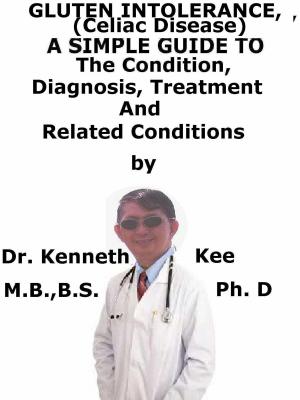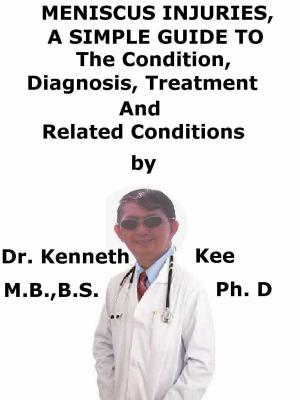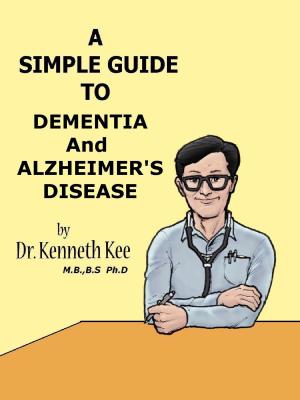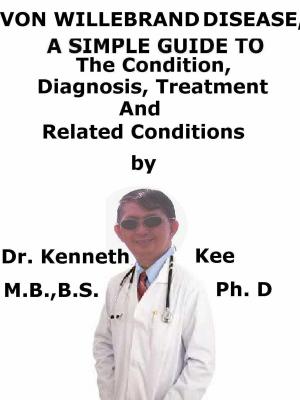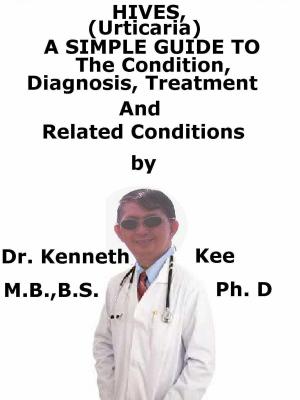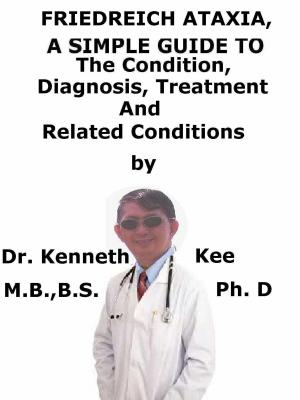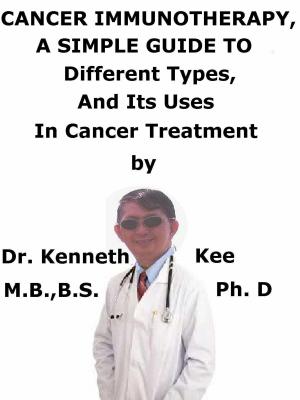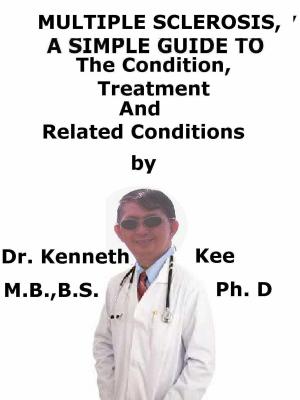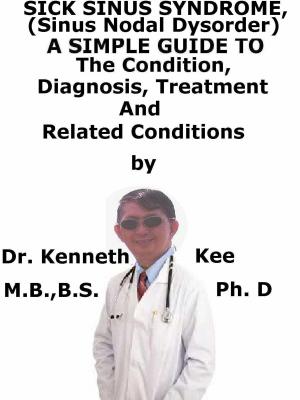Atrial Fibrillation A Simple Guide to The Condition, Treatment And Related Diseases
Nonfiction, Health & Well Being, Medical, Specialties, Internal Medicine, Cardiology, Health, Ailments & Diseases, Heart| Author: | Kenneth Kee | ISBN: | 9781311921765 |
| Publisher: | Kenneth Kee | Publication: | December 19, 2014 |
| Imprint: | Smashwords Edition | Language: | English |
| Author: | Kenneth Kee |
| ISBN: | 9781311921765 |
| Publisher: | Kenneth Kee |
| Publication: | December 19, 2014 |
| Imprint: | Smashwords Edition |
| Language: | English |
Atrial Fibrillation is an abnormal irregular heart beat
Lung diseases and hyperthyroidism contributes to it
It is caused by coronary heart disease and other heart condition
Other causes are congenital heart disease and systemic afflictions
Typically there is fast heart beats and sense of palpitations
There may chest pains and difficulty in respiration
There may congestive heart failure and ankle swelling
There are irregular heart beats and fainting
Both atrial chambers are enlarged due to irregular heart conditions
ECG will confirm the presence of atrial fibrillation
Treatment is to prevent the throwing out of blood clots
These blood clots can cause heart attacks and stroke
Treatment is usually with digoxin, dilatrend and aspirin
Sometimes you may have to use the blood thinner warfarin
Which while good and cheap can cause severe bleeding
Cardioversion and pacemaker procedures may be more lasting.
-An original poem by Kenneth Kee
Interesting Tips about Atrial Fibrillation
A Healthy Lifestyle
-
Take a well Balanced Diet
-
The treatment of atrial fibrillation is aimed at
a. Regulating the heart beat and rhythm- digoxin, dilatrend, beta blockers
b. Preventing blood clots to be thrown out in the blood stream -anticoagulants
c. In cases of uncontrolled tachycardia, immediate cardio version may be done.
Regulating the heart beat:
a. Rate control
Rate control is by drugs to reduce the heart rate to 60 to 100bpm without changing to a regular rhythm.
The medications work by blocking the AV node reducing the electrical impulses to the ventricles.
b. Beta blockers such as metoprolol, atenolol, bisoprolol
c. Cardiac glycosides (digoxin)
d .Calcium channel blockers (i.e. diltiazem or verapamil)
e. Amiodarone has AV node blocking effects which can be used
Rhythm control work to restore the regular heart rhythm and maintain it with drugs.
The anti-arrhythmic medications make the heart tissue less excitable.
Prevention of blood clots in blood stream:
Anticoagulation with drugs as below reduce the risk of blood clots being thrown out from the heart and blocking the passage of blood in the arteries of the heart or brain
a. Aspirin
b. Clopidogrel in those who are allergic to aspirin
- Keep bones and body strong
Bone marrow produces our blood
Eat foods rich in calcium like yogurt, cheese, milk, and dark green vegetables.
Eat foods rich in Vitamin D, like eggs, fatty fish, cereal, and fortified milk.
Eat food rich in Vitamins B and C such as green vegetables and fruits
Zinc and other minerals are important to the body
- Get enough rest and Sleep
Avoid stress and tension
- Exercise and stay active.
It is best to do weight-bearing exercise such as walking, jogging, stair climbing, dancing, or lifting weights for 2½ hours a week.
One way to do this is to be active 30 minutes a day at least 5 days a week.
- Do not drink more than 2 alcohol drinks a day for a man or 1 alcohol drink a day for a woman.
Alcohol use also increases the chance of falling and breaking a bone.
- Stop or do not begin smoking.
It also interferes with blood supply and healing.
Chapter 1
Atrial Fibrillation
Atrial Fibrillation is a heart condition where the disordered electrical impulses of the atrial muscle lead to irregular electrical impulses to the ventricular heart muscles resulting in irregular heart beats.
Age: 8% of people over 80 have AF
Family history of AF increases risk by 30%.
Atrial Fibrillation is caused by underlying heart conditions such as:
- Primary heart diseases:
a. Coronary artery disease
b. Mitral stenosis
c. Mitral regurgitation
d. Hypertrophic cardiomyopathy
e. Pericarditis
f. Congenital heart disease
g. Previous heart surgery - Hypertension (High blood pressure)
- Lung diseases such as
a. Pneumonia,
b. Lung cancer,
c. Pulmonary embolism,
d. Sarcoidosis - Excessive alcohol consumption
- Hyperthyroidism
Atrial Fibrillation is an abnormal irregular heart beat
Lung diseases and hyperthyroidism contributes to it
It is caused by coronary heart disease and other heart condition
Other causes are congenital heart disease and systemic afflictions
Typically there is fast heart beats and sense of palpitations
There may chest pains and difficulty in respiration
There may congestive heart failure and ankle swelling
There are irregular heart beats and fainting
Both atrial chambers are enlarged due to irregular heart conditions
ECG will confirm the presence of atrial fibrillation
Treatment is to prevent the throwing out of blood clots
These blood clots can cause heart attacks and stroke
Treatment is usually with digoxin, dilatrend and aspirin
Sometimes you may have to use the blood thinner warfarin
Which while good and cheap can cause severe bleeding
Cardioversion and pacemaker procedures may be more lasting.
-An original poem by Kenneth Kee
Interesting Tips about Atrial Fibrillation
A Healthy Lifestyle
-
Take a well Balanced Diet
-
The treatment of atrial fibrillation is aimed at
a. Regulating the heart beat and rhythm- digoxin, dilatrend, beta blockers
b. Preventing blood clots to be thrown out in the blood stream -anticoagulants
c. In cases of uncontrolled tachycardia, immediate cardio version may be done.
Regulating the heart beat:
a. Rate control
Rate control is by drugs to reduce the heart rate to 60 to 100bpm without changing to a regular rhythm.
The medications work by blocking the AV node reducing the electrical impulses to the ventricles.
b. Beta blockers such as metoprolol, atenolol, bisoprolol
c. Cardiac glycosides (digoxin)
d .Calcium channel blockers (i.e. diltiazem or verapamil)
e. Amiodarone has AV node blocking effects which can be used
Rhythm control work to restore the regular heart rhythm and maintain it with drugs.
The anti-arrhythmic medications make the heart tissue less excitable.
Prevention of blood clots in blood stream:
Anticoagulation with drugs as below reduce the risk of blood clots being thrown out from the heart and blocking the passage of blood in the arteries of the heart or brain
a. Aspirin
b. Clopidogrel in those who are allergic to aspirin
- Keep bones and body strong
Bone marrow produces our blood
Eat foods rich in calcium like yogurt, cheese, milk, and dark green vegetables.
Eat foods rich in Vitamin D, like eggs, fatty fish, cereal, and fortified milk.
Eat food rich in Vitamins B and C such as green vegetables and fruits
Zinc and other minerals are important to the body
- Get enough rest and Sleep
Avoid stress and tension
- Exercise and stay active.
It is best to do weight-bearing exercise such as walking, jogging, stair climbing, dancing, or lifting weights for 2½ hours a week.
One way to do this is to be active 30 minutes a day at least 5 days a week.
- Do not drink more than 2 alcohol drinks a day for a man or 1 alcohol drink a day for a woman.
Alcohol use also increases the chance of falling and breaking a bone.
- Stop or do not begin smoking.
It also interferes with blood supply and healing.
Chapter 1
Atrial Fibrillation
Atrial Fibrillation is a heart condition where the disordered electrical impulses of the atrial muscle lead to irregular electrical impulses to the ventricular heart muscles resulting in irregular heart beats.
Age: 8% of people over 80 have AF
Family history of AF increases risk by 30%.
Atrial Fibrillation is caused by underlying heart conditions such as:
- Primary heart diseases:
a. Coronary artery disease
b. Mitral stenosis
c. Mitral regurgitation
d. Hypertrophic cardiomyopathy
e. Pericarditis
f. Congenital heart disease
g. Previous heart surgery - Hypertension (High blood pressure)
- Lung diseases such as
a. Pneumonia,
b. Lung cancer,
c. Pulmonary embolism,
d. Sarcoidosis - Excessive alcohol consumption
- Hyperthyroidism



